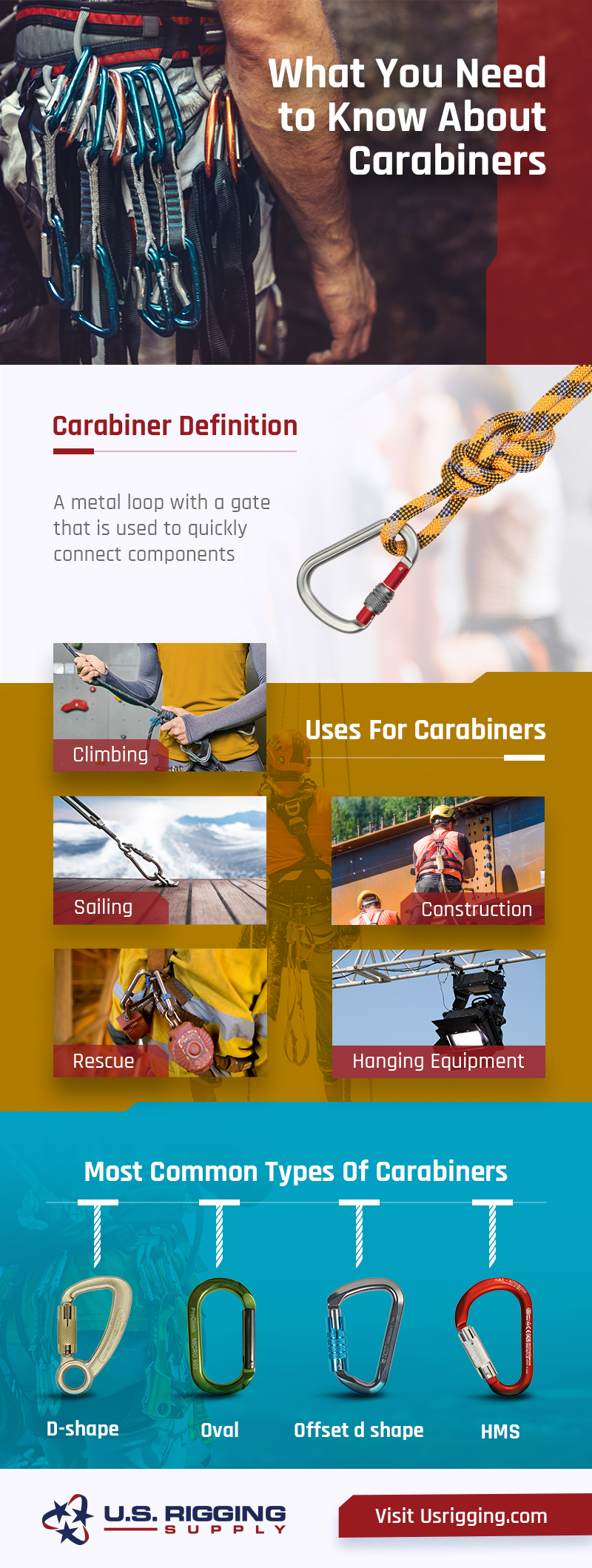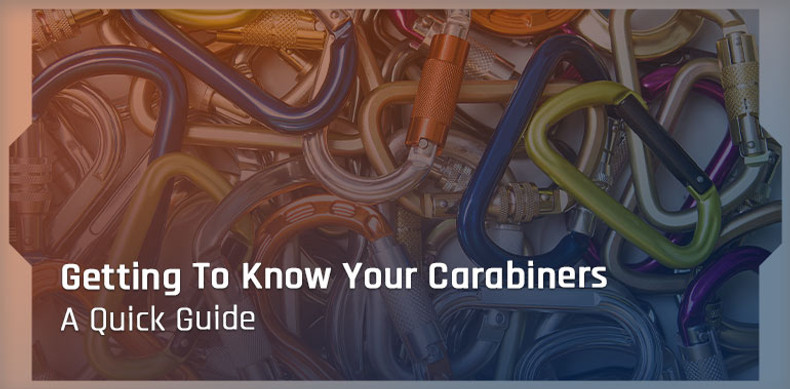Our sister site usrigging.com gave us permission to use the content below. We thought it was extremely valuable to share their breakdown on the different types of carabiners. Access the complete guide to carabiners here

Why is carabiner shape important?
The shape impacts the carabiner’s core characteristics, such as the gate opening, load positioning on the body, strength, and ergonomics.

Equal D-Shaped Carabiners
The most popular carabiner you will find is a “D-Shaped” carabiner. They are the go-to tool for quickdraws, locking anchor points, and clipping into protection. Its main advantage, the shape reduced the chance of incorrect load positioning that might occur because of involuntary rotation. (Shop Now)
Modified D-Shaped Carabiners
The Modified D-Shaped Carabiners are another of the most popular options climbers use. They usually have a large gate opening, which makes clipping on them easy. They are not as strong as regular D-Shape Carabiners and tend to be more expensive. (Shop Now)
Pear-Shaped Carabiners
Also known as HMS carabiners, these over-sized connectors are built for belaying. The wide space gives room for the hitch to overturn while the narrow structure offers a solid connecting point for maneuvers. Climbers favor these types of carabiners. (Shop Now)
Oval-Shaped Carabiners
Oval shaped carabiners are the classic carabiners. They’re cheap, distribute the weight evenly over the connector, versatile, and easy to combine with other devices. (Shop Now)
What about carabiner gate shape?
You’ll tend to come across the same batch of gates in carabiners:

Screw-Lock Carabiners
These gates work the way they sound. You need to manually unscrew the safety sleeve to gain access. There is a risk that wind or vibration can cause the screw to loosen. In which case, this type of gate is not the most recommended tool for fall protection work. (Shop Now)
Twist-Lock Carabiners
To unlock these gates users most make two sequential movements. The huge pro to this type of gate are accidents of them opening are reduced. However, if say a rope was tangled there is a risk of the movements happening. Please use caution when using these types of tools. (Shop Now)
Triple-Lock Carabiners
One of the biggest pros to this type of carabiner is their rapid auto-locking gate. In fact, this specific tool requires three distinct motions to open the gate. Although this creates a level of security climbers tend to complain about the need of two hands to use the device and in terms of usage it can go slow as a result of the carabiner needing to be unlocked each time. (Shop Now)
Straight Gate Carabiners
You'll find a variety of these for non-climbing applications. They're used frequently for racking gear such as stoppers and cams. An easy way to remember these are they look how they sound - straight from top to bottom. Some feature a keylock nose mechanism that prevents the carabiner from hooking to your gear. (Shop Now)
Bent Gate Carabiners
Bent Gate Carabiners are reserved for the rope-end of quickdraws. They have a durable, concave shaped gate that makes it easy to quickly clip rope. (Shop Now)
Wire Gate Carabiners
The Wire Gate Carabiners allow for a larger gate opening and are less likely to freeze compared to other gates in cold temperatures. They feature a stainless steel wire loop for a fate that decreases the overall weight and eliminates the need for excess parts found in the common gate types. (Shop Now)
Final Thoughts…
If you work in fall protection or are looking to get into rock climbing you’ll need to get your hands on some carabiners. The main thing we want you to take away from this article is not all carabiners are made the same. They have different functions and keep you safe in different ways. Feel free to reach out if you have any questions on the above.





